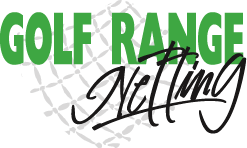After investing a lot of money in a drone, the last thing you want to do is damage, crash, or lose it during flying! That’s why, whether you have never flown a drone or have done so frequently, you should acquire a drone net to ensure you can operate it safely.
Netting gives an extra layer of safety between you and the drone you’re flying as you get to know how it works. In general, it keeps pilots and instructors safe in every situation. After all, there’s no investment too large to protect someone’s and your drone’s safety.
What Should You Look for When Setting Up Drone Netting?
Drones have become increasingly popular over the last decade, serving various purposes. The netting needs can vary because there are so many different drone uses.
Material Strength: Netting can be made from a variety of materials. Each material has qualities that make it better or worse suited for its various usage scenarios.
Nylon is commonly used in netting because it has a good strength-to-weight ratio. However, one disadvantage of nylon is that it has a relatively high coefficient of friction, making it difficult to work with.
Polyester is a synthetic polymer with many of the same qualities as nylon. It, too, is robust, elastic, and resistant to UV light and abrasion. But it’s less expensive than nylon and has a lower coefficient of friction. However, it’s not as strong as nylon and is more likely to stretch over time.
Because it is lightweight and robust, polypropylene is frequently used in netting. Although expensive, Kevlar is used because it is highly strong, lightweight, and heat resistant.
Steel can be another option as it’s highly robust but too heavy and difficult to handle. At the same time, plastic is affordable and simple to deal with. However, it’s not as strong as other materials, such as nylon or polyester.
So, when selecting a material for your drone enclosure, consider each option’s relative strengths and drawbacks so you may select the best one for your needs!
Mesh Size: The mesh opening’s size is crucial. The sizes are determined by the application as well as the size of the drone it might contain. It’s mandatory to pick a netting with small enough mesh sizes to ensure drones don’t fly through it or get entangled and also, it must be big enough for the drone to have proper visibility and airflow.
Weather Resistance: Nets should ideally retain their strength against rain or severe weather conditions in the area drone netting will be installed. Such drone cage should also be rot-resistant in most chemical and environmental conditions.
Winds or blizzards, drone flight, can become dangerous during harsh weather as piloting may not be enough to ensure safe operation. In that case, the netting should be strong enough to keep the device from being thrown about.
Simply put, drone nets must survive extreme weather conditions such as rain, snow, sleet, hail, and so on, so make sure you pick one specifically built for outside use. Waterproofing or water-resistant coatings help protect your net and keep your belongings secure.
UV Resistance: Drone netting is frequently exposed to bright sunlight for extended periods, which can lead them to break down over time. To avoid this, you must look for UV-resistant netting or have been treated with a UV protection coating. This will ensure that your net remains intact even after months of exposure to extreme sunlight.
Fire Retardant Properties: Unfortunately, mishaps always happen, including fires breaking out. The last thing you want to do is feed it. In this case, the best practice is to limit the number of products or materials used as kindling.
While most netting is now fire retardant, some options are still not. Fire-resistant netting normally has reinforced edges and is constructed of non-flammable material. So, before purchasing any, double-check the material/components.
Regulation Compliance: Some drone laws and regulations should be followed to prevent further accidents when putting up any netting. Installing an OSHA-compliant netting system is a step toward enhancing your operation. This ensures that even if your drone falls from a height, it can protect pedestrians or other bystanders.
Finally, it is critical to stay current on the most recent advancements in drone and drone-netting technologies and the changing legal and regulatory landscape around their use. To protect your drone from any accidents, contact our team at Golf Range Netting.
